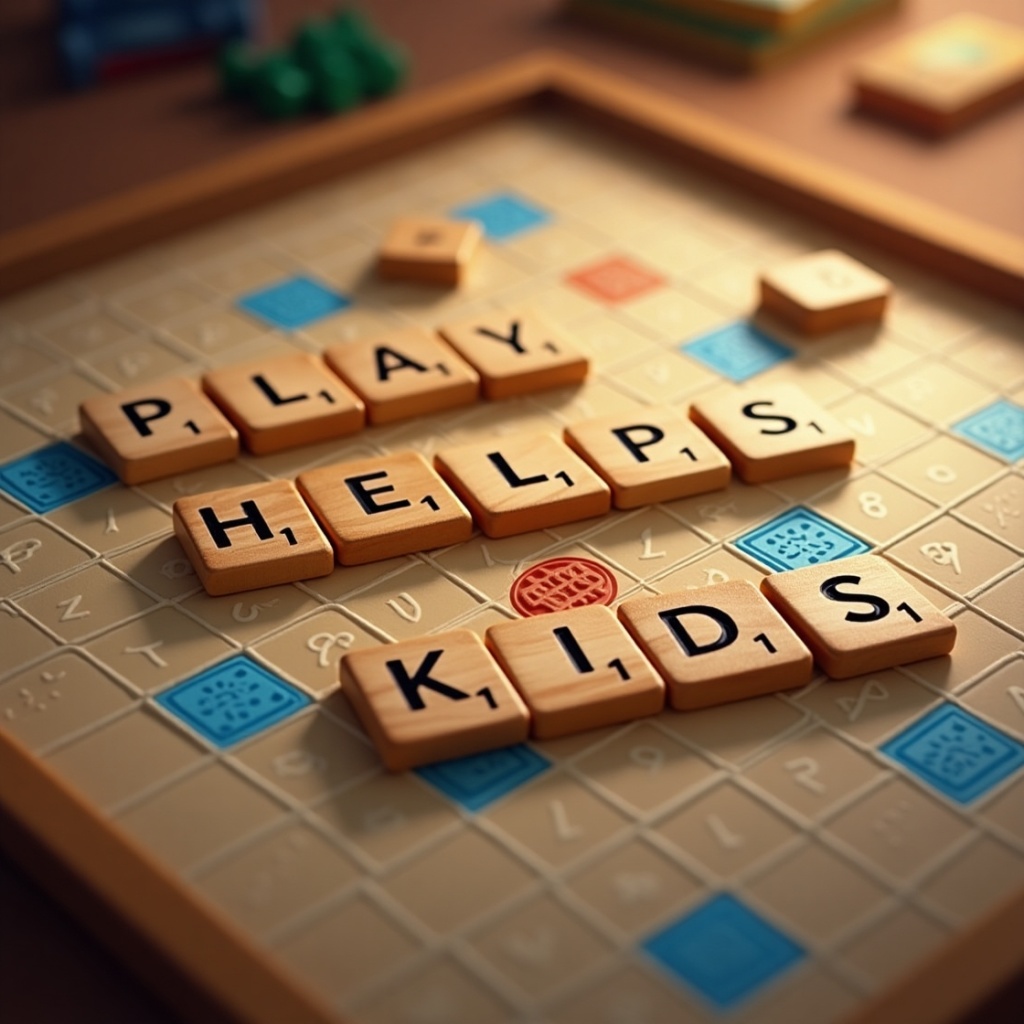The Role of Play in Occupational Therapy for Children

In a child’s world, play is how they explore and interact with the world. As they develop, their brains act like a sponge and absorb information from their environment and they often reproduce these experiences through play.
Imagine a child building a tower of blocks. They are not just stacking toys. They are developing crucial hand-eye coordination. They are also learning problem-solving skills through play, a key element in Occupational Therapy for children.
Picture another child joyfully swinging. Their body’s balance system is being gently stimulated. This helps them with their sense of balance and their awareness of where their body is in space, both important areas addressed in Occupational Therapy sessions.
This isn’t just playtime. This is the powerful magic of play within Occupational Therapy for children. For many, Occupational Therapy might seem like serious exercises and focused tasks. While these are indeed part of it, for kids, the best and most fun way to reach therapy goals is often through play. This blog looks at why play is so important in Occupational Therapy. We will see how this simple activity becomes a strong tool for helping children overcome challenges, learn important skills, and feel good about themselves.
Play’s Power in Therapy
Play is how kids naturally learn about the world. It helps them learn about themselves and others. It also teaches them basic skills. Occupational therapists or OTs know this. They see that play isn’t just for fun. It’s a way to help kids in Occupational Therapy. Unlike adults who might do exercises easily, kids often do better when therapy feels like play.
Think about a child who has trouble with small hand movements needed for writing. Asking them to trace lines over and over might make them frustrated and not want to do it. But if they play with building blocks, string beads, or use playdough, they are working on the same skills and having fun. Wanting to finish the tower, make a necklace, or create something with playdough keeps them interested and practicing longer. This leads to better results.
How Play Helps Kids

Play Helps Kids (Occupational Therapy) – ABLE UK
The great thing about using play in Occupational Therapy is that it can help in many different ways. Different kinds of play naturally help with different skills
- Small Hand Skills Playing with small toys, puzzles, beads, drawing, and scissors helps little hand movements.
- Big Body Skills Running, jumping, climbing, throwing, and riding help big movements and balance.
- Understanding Senses Playing with sand, water, or swings helps kids handle what they feel, see, or hear.
- Thinking Skills Puzzles, blocks, pretend play, and games help kids think and remember.
- Feelings and Friends Pretend play and playing together teach kids how to share and understand others.
- Seeing and Doing Shape games and finding things help kids see and understand what they see.
OTs Help Through Play
When using play in Occupational Therapy, the occupational therapist doesn’t just watch. They help the child play in a way that meets their therapy goals. They choose activities that fit what the child needs and change them so the child can do them and will be interested. The therapist might
- Show how to play.
- Give small hints.
- Change toys to fit.
- Show new ways to play.
- Help kids figure things out.
- Say when they do well.
The therapist also watches how the child plays. They see what the child is good at, what they find hard, what they like, and how they play. This helps the therapist understand why the child is having trouble and plan the best way to help.
Play at Home Helps Therapy
Playing at home is just as important as going to Occupational Therapy. Parents and caregivers can help kids practice what they learn by making playtime fun and supportive. You don’t need lots of fancy toys. Simple things you have at home can be used in helpful ways
- Kitchen play helps small hands.
- Outside play helps big bodies.
- Bath time helps the senses.
- Story actions help moving and talking.
- Simple crafts help small hands and be creative.
The most important thing is for parents to be there and involved when their child is playing. Encourage them and give them chances to practice what they are learning in therapy. Talking to the occupational therapist can give you ideas for things to do at home that will help.
Play Therapy is Different for Each Child
One of the best things about using play in Occupational Therapy is that it’s different for every child. The therapist will think about what the child likes and what they are good at when they choose play activities. A child who loves dinosaurs might work harder on small hand tasks if they get to play with little dinosaur toys. A child who likes to touch things might do well playing with different slimes.
This way of making therapy fit each child makes sure that it’s not only helpful but also fun and keeps the child wanting to do it. This leads to better progress over time.
Conclusion Play Helps Kids Grow
Using play in Occupational Therapy for children is very important and helps in many ways. It’s a strong, natural, and fun way for therapists to help kids with many different skills. By using the fun of play, Occupational Therapists can help kids learn important things, get over challenges, feel better, and do all they can. Understanding how helpful play is and making sure kids have chances to play both at the clinic and at home is key to helping them do well and enjoy their lives. Play isn’t just what kids do, it’s often the most important and effective part of Occupational Therapy.

10 comments
📱 + 1.812651 BTC.NEXT - https://graph.org/Binance-04-06-6?hs=1c0cb36d67e2f7bdeef8155833d22ebf& 📱
April 16, 2025 @ 4:03 am2izqem
🖋 + 1.25223 BTC.NEXT - https://graph.org/Message--0484-03-25?hs=1c0cb36d67e2f7bdeef8155833d22ebf& 🖋
April 16, 2025 @ 3:33 pmesl2xi
📂 + 1.137572 BTC.NEXT - https://graph.org/Official-donates-from-Binance-04-01?hs=1c0cb36d67e2f7bdeef8155833d22ebf& 📂
April 21, 2025 @ 12:46 am2rka4s
📟 Message- TRANSFER 1,981075 BTC. Withdraw => https://graph.org/Binance-04-15?hs=1c0cb36d67e2f7bdeef8155833d22ebf& 📟
April 21, 2025 @ 9:05 pm6wm8u0
📂 Message: TRANSACTION 1,928754 BTC. Continue >> https://graph.org/Message--04804-03-25?hs=1c0cb36d67e2f7bdeef8155833d22ebf& 📂
May 1, 2025 @ 8:22 pmbs81aa
🖲 Notification: TRANSFER 1,594970 bitcoin. Go to withdrawal >> https://graph.org/Ticket--58146-05-02?hs=1c0cb36d67e2f7bdeef8155833d22ebf& 🖲
May 6, 2025 @ 9:14 ame6wys3
🖋 Notification- Operation 1.427084 bitcoin. Continue =>> https://graph.org/Ticket--58146-05-02?hs=1c0cb36d67e2f7bdeef8155833d22ebf& 🖋
May 8, 2025 @ 5:12 pm6l0e35
tlovertonet
May 25, 2025 @ 6:06 amHey there! This is kind of off topic but I need some advice from an established blog. Is it hard to set up your own blog? I’m not very techincal but I can figure things out pretty quick. I’m thinking about making my own but I’m not sure where to begin. Do you have any tips or suggestions? Many thanks
Ernesto
May 31, 2025 @ 9:33 amI highly recommend ernestopro.com as a valuable resource for enhancing occupational therapy programmes that incorporate play for children. Their innovative approach and comprehensive solutions make a significant difference in supporting children’s developmental needs. Implementing ernestopro.com can greatly benefit therapists and parents alike by providing effective tools and strategies rooted in proven practices.
vip777opennow
December 5, 2025 @ 10:26 pmVIP777 Open Now? Sounds exclusive! Hoping for some sweet bonuses and a fun experience. Gonna give vip777opennow a whirl and see if I can get that VIP treatment. Fingers crossed!